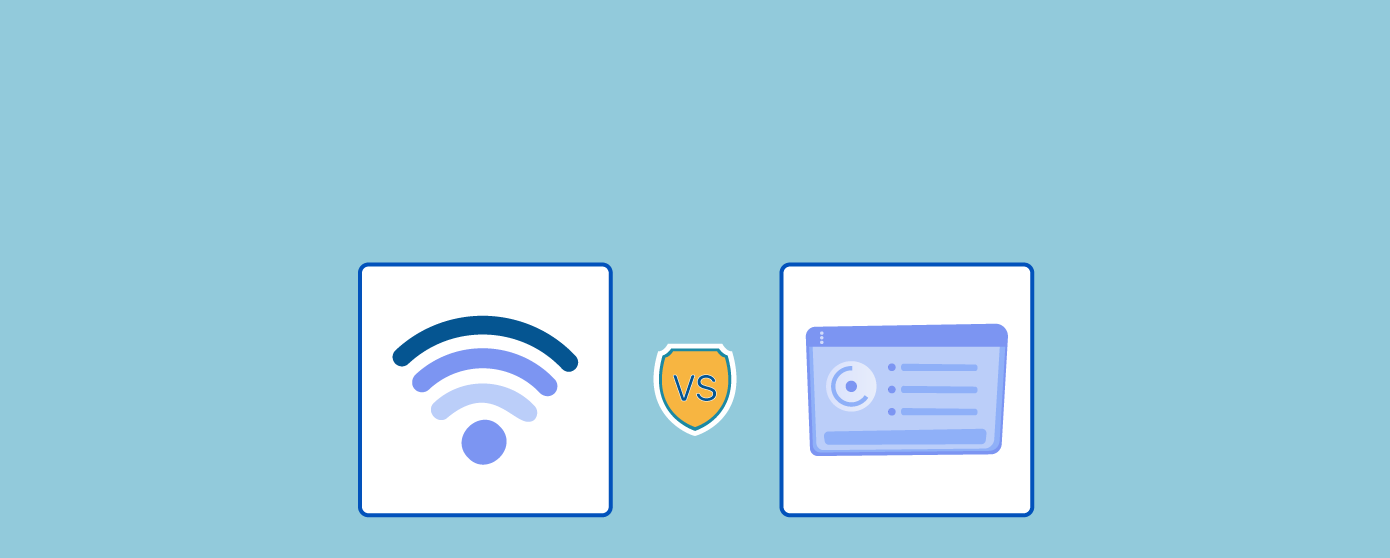
For modern businesses to function smoothly, they rely on advanced technological capabilities. But this reliance has given rise to new vulnerabilities in IT systems. To keep information and IT assets secure, organizations invest in data and network security. Information security and network security are crucial elements in any organization’s IT policy today. To fully understand their critical role, we must know the difference between information security and network security.
In this article, we explore the various facets of information security vs network security and their relevance in the data protection and security of network infrastructure.
Although there is obvious overlap, there are some difference between data security and network security.
Information security is the sum of measures taken by an organization to protect its information from any kind of unauthorized access.
Network security entails the steps taken by a firm to secure its network infrastructure. In fact, robust information security is a function of securing both data and network assets.
Information security management aims to protect the confidentiality, integrity, and availability of its informational assets. An information asset is an organization’s private data that is meant to be protected from any misuse. It may include strategic organizational documentation, product information, patents, project documentation, employee and customer data, proprietary knowledge, trade secrets, etc. With proper policies and procedures, organizations can safeguard their informational assets against potential threats. For some industries, information security management is also a matter of compliance. For instance, protecting the sensitive financial data of its customers can be a legal prerequisite for a company operating in the financial domain.
To ensure confidentiality of information, information security management teams classify data based on its anticipated risk and implement additional privacy controls if needed. For data integrity, they implement data integrity controls such as user access control, version control, checksum, etc. The purpose is to keep stored data accurate and consistent in a way that it cannot be modified or deleted without permissions.
Lastly, information security experts maintain the availability of information to approved users through different processes such as hardware maintenance, installation patches and upgrades, incident response, and disaster recovery management to prevent a cyberattack-induced information loss.
As part of network security management, firms take preventive measures to protect their network infrastructure from any attacks. Common attacks include malware, phishing, denial of service, session hijack, brute force attacks, etc. There are various policies and processes to avoid these. One of the most basic processes is to provide users with password-protected access.
The process of network security management starts with authentication before access, which includes:
Also, the use of a firewall stops unauthorized users from entering the network, but it cannot determine attacks on the systems. An additional security system is required for this purpose. While small businesses can do this with anti-virus or anti-spyware program to stop any incoming threats, large-scale companies with complex security needs may have to invest in advanced security resources such as robust anti-virus software, encryption, and a strong proxy.
Almost 56% of the world’s internet traffic is generated by bots, hacking operations, and spammers. Breaches in information and network security can make customers wary of the organizations suffering from them. 46% of the customers do not want to purchase from a firm with a suspicious security background. These issues will become more ubiquitous than ever with an increase in internet usage and businesses’ dependence on it.
Without stringent network security in place, an organization’s information and assets are never fully protected. Robust network security helps in providing uninterrupted customer experience by avoiding cyberattacks that can cause a digital interruption. Sound information security management enables a company to protect itself from any legal ramifications arising out of exposure of customer data to unauthorized persons. It can lead to faulty compliance and loss of certifications too.
When an organization stays abreast of its data and network security needs, it manages to save both time and money spent on managing the legal and business problems in the aftermath of an attack. It improves overall operations and minimizes risks. Cohesive network security requires firms to proactively find any vulnerabilities in the network and its applications. There are several great tools available to answer the unique needs of a firm’s IT infrastructure.
For instance, Indusface AppTrana manages the complete security service for an organization’s business applications and offers tailored protection by identifying issues and patching them instantly.
Stay tuned for more relevant and interesting security articles. Follow Indusface on Facebook, Twitter, and LinkedIn.
This post was last modified on December 7, 2023 14:48
Indusface has once again been recognized as a Gartner® Peer Insights™ Customers' Choice for Cloud… Read More
Protect your business from DDoS attacks with multi-layered DDoS defense, proactive threat modeling, rate limiting,… Read More
A Managed WAF is a comprehensive cybersecurity service offered by specialized providers to oversee, optimize,… Read More